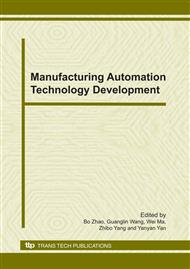p.360
p.365
p.369
p.373
p.379
p.383
p.388
p.392
p.397
Experimental Study on Cutting Force in Machining Nickel Base Superalloy
Abstract:
Studies on cutting force lead an extremely important guiding significance in the actual producing. Nickel base superalloy is widely in the manufacture of components for some important industrial areas, because of their ability to retain high-strength at elevated temperatures. It possesses excellent performance as a class of advanced materials. Because of its very poor machinability, the study on cutting force in machining nickel-based superalloy in the actual production or scientific research is relatively less. In this paper, Author aim at two kinds of typical difficult-to-machining materials nickel base superalloy (GH4169, K24). Contrasting with other typical materials ,such as 45# steel and high strength steel 35CrMnSi,study the law of cutting force effected by cutting parameters under the conditions of turning . Intuitive analysis of cutting force changes with the cutting parameters, as well as these characteristics on three-axis force of each type of material, that is to improve its processability and to provide guidance to actual production has a positive significance.
Info:
Periodical:
Pages:
379-382
Citation:
Online since:
December 2010
Keywords:
Price:
Сopyright:
© 2011 Trans Tech Publications Ltd. All Rights Reserved
Share:
Citation:


